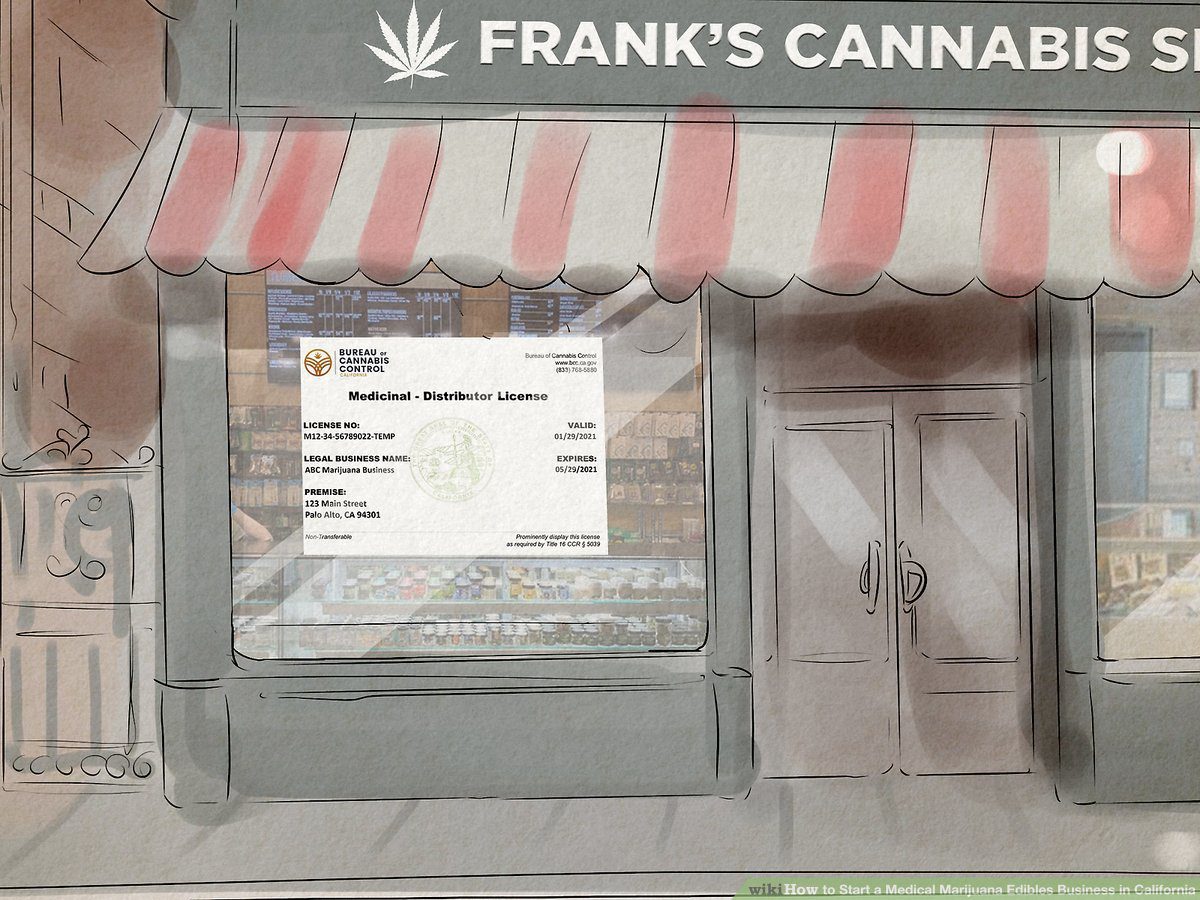In order to start your own business in Ohio, you must first choose the legal structure of your business. Will you operate as a sole proprietorship, partnership, limited liability company (LLC), or corporation? Once you have decided on the legal structure, you will need to obtain any required licenses and permits from the state and local government.
You will also need to open a business bank account and get insurance for your business. Finally, you will need to create a marketing plan and website for your new business.
- Determine what type of business you would like to start
- This will help you decide which licenses and permits you will need
- Choose a name for your business and register it with the state of Ohio
- Obtain any necessary licenses and permits required to operate your business in Ohio
- Set up a business bank account and apply for any loans or funding you may need to get your business off the ground
How to Start a Business in Ohio With No Money
Starting a business is a daunting task, especially if you don’t have much money to invest. However, it is possible to start a business in Ohio with little to no money. Here are some tips on how to get started:
1. Determine what type of business you want to start. This will help you focus your efforts and make the most of your limited resources.
2. Research the market and competition in your area.
Knowing who your potential customers are and what they’re looking for will give you a leg up when starting out.
3. Develop a business plan. This document will serve as your roadmap as you launch and grow your business.
Make sure to include financial projections so you can track your progress over time.
4. Find creative ways to finance your venture. If traditional methods like loans or investors aren’t an option, consider crowdfunding or personal savings.
5. Promote your business online and offline through marketing and networking efforts . Getting the word out about your company is essential for attracting customers and growing your business .
Ohio Small Business Startup Grants
Small businesses are the lifeblood of Ohio’s economy, accounting for 99% of all Ohio businesses and over half of the state’s private workforce. But starting a small business can be a daunting task. Fortunately, there are a number of resources available to help small businesses get started, including grants.
The Ohio Small Business Development Center (SBDC) offers a variety of grants to help small businesses get off the ground. The Microloan Revolving Fund provides loans of up to $50,000 to startup or expanding businesses with limited access to capital. The Minority Business Assistance Program provides grants of up to $10,000 to minority-owned startups and expanding businesses.
And the Women’s Business Enterprise Initiative provides grants of up to $5,000 to women-owned startups and expanding businesses.
In addition to the SBDC, there are a number of other organizations that offer grant programs for small business start-ups in Ohio. The Statewide Development Corporation offers loans and equity investments for early stage companies in high growth industries such as bioscience and technology.
The Appalachian Regional Commission offers grants for projects that promote economic development in Appalachia Ohio. And the Economic & Community Development Institute provides financing and technical assistance for entrepreneurs in low-income communities across Ohio.
So if you’re thinking about starting a small business in Ohio, be sure to check out these grant programs—they could be just what you need to get your business up and running!
Ohio Business License
If you’re starting a business in Ohio, you’ll need to get a business license. The process is relatively simple, but there are a few things you need to know before you get started.
First, you’ll need to decide what type of business license you need.
There are four types of licenses available: general business, professional, occupational, and home occupation. You can find more information about each type of license on the Ohio Business Gateway website.
Once you’ve decided which license is right for your business, you can begin the application process online or by mail.
The application fee is $125 for most businesses; however, there are some exceptions (e.g., home-based businesses).
You’ll need to provide some basic information about your business on the application, including your business name and contact information. You’ll also be asked to provide a brief description of your business activities.
Once your application is complete, submit it along with the applicable fee to the address listed on the form.
You should receive your new Ohio Business License within 4-6 weeks after submitting your application.
Ohio Llc Registration
If you’re thinking about starting a business in Ohio, you may be wondering if you need to register your business as an LLC. The answer is maybe. In Ohio, LLCs are formed by filing articles of organization with the Ohio Secretary of State.
You may choose to file your LLC as a domestic or foreign entity. If you’re doing business in Ohio and your LLC is registered in another state, you’ll need to file as a foreign entity.
There are several benefits to registering your LLC in Ohio.
First, it protects your personal assets from debts and liabilities incurred by your business. Second, it makes it easier to open bank accounts and obtain business licenses and permits. And third, it can give your business a professional image that will help you attract customers and partners.
If you decide to register your LLC in Ohio, there are a few things you’ll need to do. First, choose a name for your LLC that meets the requirements of the Ohio Revised Code. Next, appoint one or more members or managers who will oversee the operations of your LLC.
Finally, draft and file articles of organization with the Secretary of State’s office.
After your LLC is registered, you’ll need to obtain an Employer Identification Number (EIN) from the IRS so that you can open bank accounts and file taxes on behalf of your company.
Register a Business in Ohio
If you’re starting a business in Ohio, you’ll need to register it with the state. The process is relatively simple, and can be done online.
First, you’ll need to choose a name for your business.
Once you’ve settled on a name, you can check to see if it’s available by searching the Ohio Business Gateway. If the name is available, you can reserve it for 120 days.
Next, you’ll need to obtain a Certificate of Assumed Name from the county clerk’s office in the county where your business will be located.
This certificate lets the public know that you’re doing business under an assumed name – that is, a name other than your own personal name.
Once you have your Certificate of Assumed Name, you can register your business with the Ohio Secretary of State’s office. You’ll need to fill out some basic information about your business, including its address and contact information.
You’ll also need to provide proof that you have obtained workers’ compensation insurance if required by Ohio law.
After registering your business with the state, there are a few other things you’ll need to do to get up and running:
Do I Need to Register My Business in Ohio
If you’re starting a business in Ohio, you may be wondering if you need to register your business with the state. The answer is yes, you do need to register your business in Ohio.
There are a few different ways to register your business in Ohio: online, by mail, or in person.
Registering online is the fastest and most convenient way to do it. You’ll need to provide some basic information about your business, such as your business name, contact information, and the type of business you’re starting.
Once you’ve registered your business, you’ll need to get a tax identification number from the Ohio Department of Taxation.
This number will be used on all of your tax filings. You can apply for your tax ID number online or by calling the department at (614) 466-3982.
After you have your tax ID number, you’ll need to get a Business Activity License from the Ohio Secretary of State’s office.
This license allows you to conduct business in Ohio and shows that you’re compliant with state laws and regulations. You can apply for your Business Activity License online or by mail.
Once you have everything squared away with the state, you can focus on getting your businesses up and running!
Registering your business is an important first step in ensuring compliance with state laws and regulations.
Register Llc Ohio Online
If you’re looking to form an LLC in Ohio, you can do so online through the Ohio Secretary of State’s website. The process is relatively simple and straightforward, and once your LLC is formed, you’ll be able to start doing business in the state.
To get started, go to the Ohio Secretary of State’s website and click on the “Businesses” tab.
From there, click on the “Form a Business Entity” link. On the next page, select “Limited Liability Company” as your entity type and then click on the “Continue” button.
On the next page, you’ll need to enter some basic information about your LLC, such as its name and purpose.
You’ll also need to designate a registered agent for your LLC. This person will be responsible for receiving legal documents on behalf of your LLC. Once you have all of this information entered, click on the “Submit” button.
You’ll then need to pay the $99 filing fee using a credit card or electronic check. Once that’s done, your LLC will be officially formed!
How to Form an Llc in Ohio Free
Ohio is a great state for forming an LLC. There are many benefits to doing so, and it can be a very simple process. Here are the steps you need to take in order to form an LLC in Ohio:
1. Choose a name for your LLC. This name must be unique and cannot be already registered with the state of Ohio. It is also important to choose a name that accurately reflects the purpose of your business.
2. Appoint a registered agent for your LLC. This person will be responsible for receiving legal documents on behalf of the LLC. They must have a physical address in Ohio and agree to accept service of process on behalf of the LLC.
3. File Articles of Organization with the Secretary of State’s office. This document needs to include the name and address of your LLC, the names and addresses of all members, the duration of your LLC (if not perpetual), and the registered agent’s information. You can find this form online or at any local county courthouse .
The filing fee is $99 .
4 Operating Agreement . Although not required by law, it is highly recommended that you create an operating agreement for your LLC .
This document outlines how the business will be run, including ownership percentages, voting rights, roles and responsibilities of members, etc . Having this agreement in place can help prevent future disputes among members . Additionally , some banks may require this agreement before they will open up an account for your business .
5 Get an Employer Identification Number (EIN) from the IRS website free -of-charge if you have more than one member in your 6 Open up a bank account using your new EIN number 7 You should now be ready to start conducting business as usual!

Credit: www.mycorporation.com
How Much Does It Cost to Start a Business in Ohio?
Starting a business in Ohio can be a relatively inexpensive endeavor, especially when compared to starting a business in other states. The first step is to choose the type of business entity you would like to form, which will determine the amount of paperwork and fees involved. For example, forming a limited liability company (LLC) requires filing Articles of Organization with the Secretary of State and paying a $99 filing fee, while forming a corporation requires filing Articles of Incorporation and paying a $125 filing fee.
You will also need to obtain any necessary licenses or permits from the state government or local municipality where your business will be located. The cost of these varies depending on the type of business you are starting and its location.
Once you have obtained all the necessary licenses and permits, you will need to find office or retail space for your business.
Leasing space is generally more affordable than purchasing property outright, especially in the early stages of starting a business. The cost of leasing will depend on many factors such as square footage, location, amenities, etc.
In addition to these start-up costs, you will also need to factor in ongoing expenses such as rent/mortgage payments, utilities, employee salaries/wages, inventory costs, marketing/advertising expenses, etc.
These costs can vary widely depending on the size and scope of your business operations. Overall, starting a business in Ohio can be fairly affordable compared to other states in the US – just be sure to do your research and plan ahead so that you have an accurate estimate of all associated costs before getting started!
Do You Need a Business License to Start a Business in Ohio?
In Ohio, you do not need a business license to start a business. However, there are some businesses that are required to have a license, such as those that sell alcohol or tobacco products. If you plan on starting a business that will require one of these licenses, you should contact the Ohio Department of Taxation for more information.
How Do I Become a Business Owner in Ohio?
There are a few things you need to do in order to become a business owner in Ohio. First, you will need to choose the type of business you would like to start. You will also need to obtain any licenses or permits that may be required for your specific type of business.
Once you have done this, you will need to register your business with the state of Ohio. Finally, you will need to obtain insurance for your business.
How Much Does It Cost to Start an Llc in Ohio?
An LLC, or limited liability company, is a business structure that offers personal liability protection and tax benefits.3 min read
How much does it cost to start an LLC in Ohio?
The cost of starting an LLC in Ohio will vary depending on the type and size of your business.
For most businesses, the total cost will be around $200. This includes the filing fee for your Articles of Organization, which is $99, and the annual report fee of $50. You may also need to obtain a business license, which costs $25-$100 depending on your city or county.
Finally, you’ll need to registered your LLC with the Secretary of State’s office, which costs $39.
If you’re planning on opening a restaurant or other retail business, you’ll need to obtain additional permits and licenses from your city or county. The cost of these permits can range from a few hundred dollars to several thousand dollars.
To get started, you’ll first need to choose a name for your LLC and make sure it’s available in Ohio. You can do this by searching the Secretary of State’s website or by calling their office at (614) 466-3910. Once you’ve chosen an available name, you’ll need to file your Articles of Organization with the Secretary of State’s office.
The filing fee for this document is $99. In your Articles of Organization, you’ll need to include:
How to Start a Business in Ohio
Conclusion
Starting a business in Ohio is a great way to become your own boss and achieve financial independence. However, starting a business is not a decision to be taken lightly. There are many things to consider before taking the plunge, such as the type of business you want to start, the amount of capital you have available, and the regulations and tax implications involved.
To help you get started on the right foot, here are some tips on how to start your own business in Ohio:
1. Choose the right business structure. The first step in starting a business is choosing the legal entity under which your business will operate.
This includes sole proprietorships, partnerships, limited liability companies (LLCs), and corporations. Each option has its own advantages and disadvantages, so it’s important to consult with an experienced attorney or accountant to determine which one is best for your particular situation.
2. Register your business name.
Once you’ve chosen a name for your business, you’ll need to register it with the state of Ohio . This can be done online through the Secretary of State’s website .
3. Get a tax identification number (TIN).
All businesses must have a TIN , also known as an Employer Identification Number (EIN). This is used for tax purposes and can be obtained from the Internal Revenue Service (IRS) . You can apply for an EIN online , by fax , or by mail .
Be sure to keep this number handy; you’ll need it when filing taxes and applying for licenses or permits down the road.
4 Apply for licenses and permits . Depending on the type of business you want to start , you may need certain licenses or permits from local , state , or federal agencies .
For example, if you plan on selling food products , you’ll need a license from th e Department of Agriculture .


